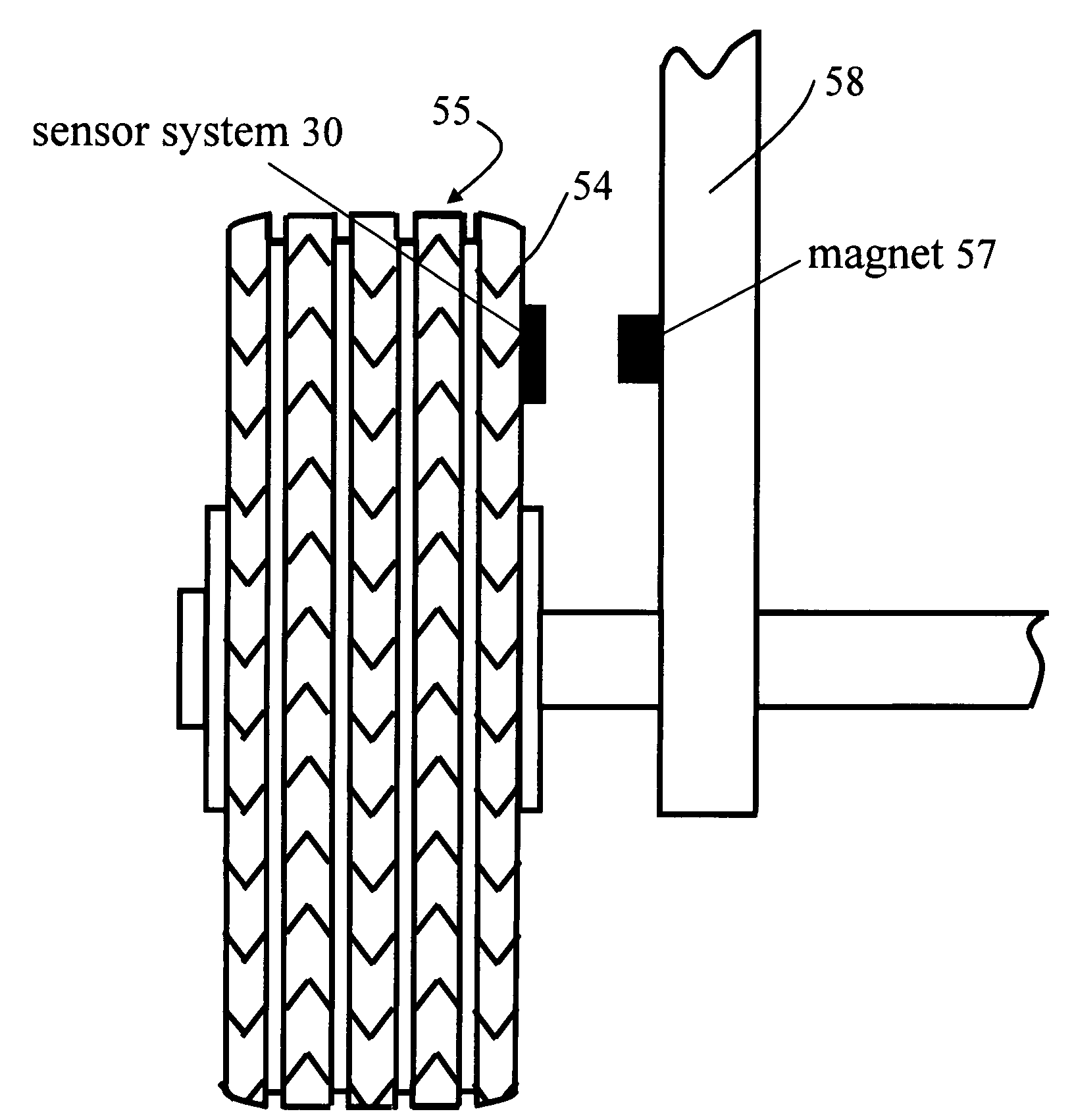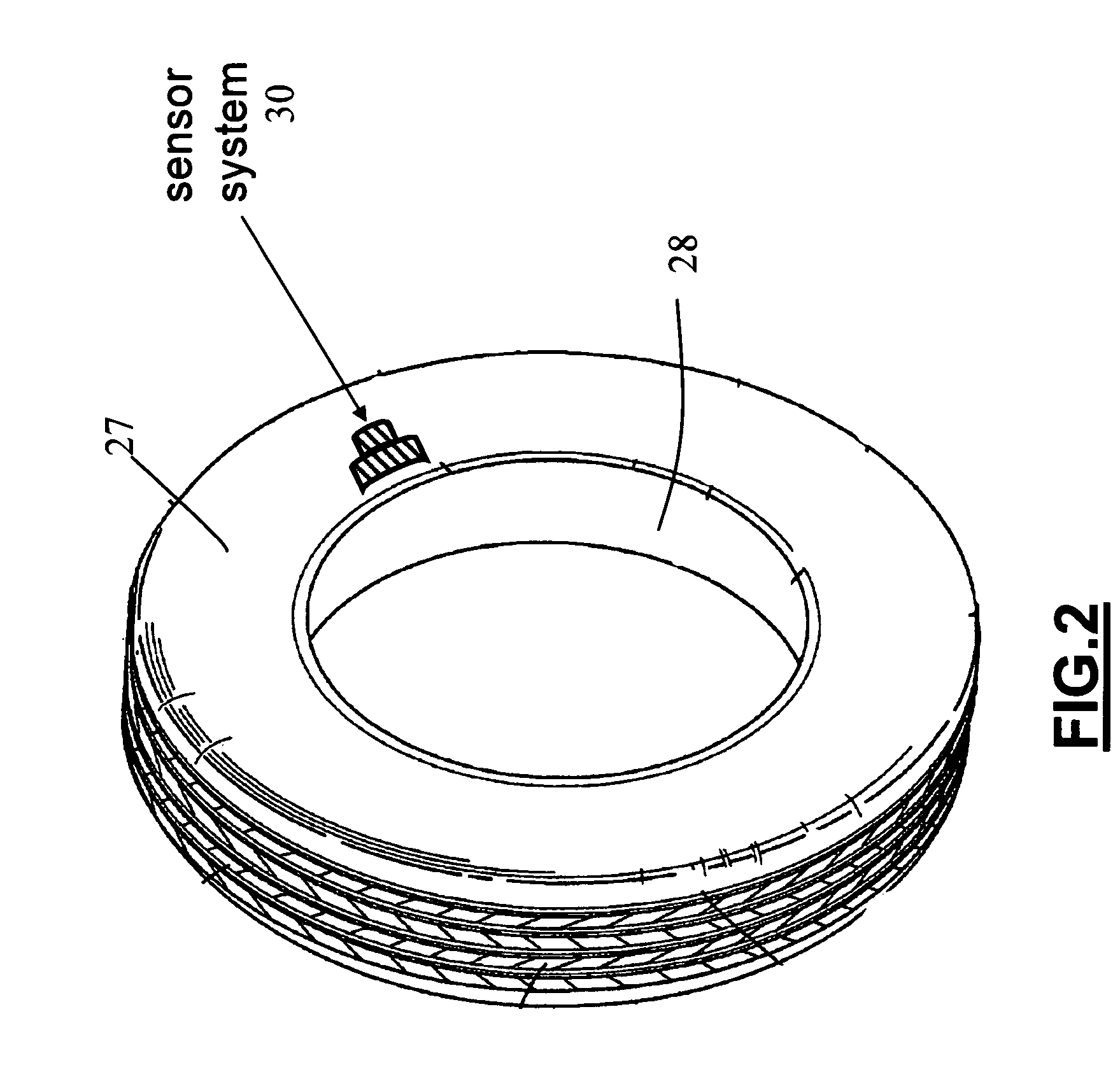Tire parameter monitoring system with inductive power source
a technology of inductive power source and sensor system, which is applied in vehicle tyre testing, instruments, roads, etc., can solve the problems of limited battery life, relatively insensitive sensors to mechanical vibration, and limited useful lifetime of sensor system, etc., and achieves simple and inexpensive implementation.
- Summary
- Abstract
- Description
- Claims
- Application Information
AI Technical Summary
Benefits of technology
Problems solved by technology
Method used
Image
Examples
Embodiment Construction
[0028]Turning now to the drawings, FIG. 1 is a schematic view of the above-described prior art tire parameter monitor system using RFID tags configured as passive transponders and electrical operating power derived from electromagnetic energy received from associated antennae when activated by the central transceiver 25. The limitations and disadvantages of the FIG. 1 system are set forth above.
[0029]FIG. 2 is a perspective view of a single wheel and tire showing a tire parameter sensor mounted on the side wall surface of the tire. As seen in this FIG., a vehicle tire 27 is mounted on a wheel 28. Mounted on the side wall of tire 27 is a tire parameter sensor assembly 30 illustrated in detail in FIGS. 3-5.
[0030]FIG. 3 is a top plan view showing tire parameter sensor assembly 30 according to the invention. As seen in this FIG., sensor assembly 30 includes a tire parameter sensor 31, a combination microcomputer unit / transmitter 32 (MCU / transmitter 32), an antenna 33, a power system 34,...
PUM
 Login to View More
Login to View More Abstract
Description
Claims
Application Information
 Login to View More
Login to View More - R&D
- Intellectual Property
- Life Sciences
- Materials
- Tech Scout
- Unparalleled Data Quality
- Higher Quality Content
- 60% Fewer Hallucinations
Browse by: Latest US Patents, China's latest patents, Technical Efficacy Thesaurus, Application Domain, Technology Topic, Popular Technical Reports.
© 2025 PatSnap. All rights reserved.Legal|Privacy policy|Modern Slavery Act Transparency Statement|Sitemap|About US| Contact US: help@patsnap.com



